Note from LeftEast editors: The recent rise of far-right populisms and the general mood of crisis has triggered reflections among those who’ve experienced the Yugoslav wars of the 1990s on the lessons to be learnt from that conflict. The Disorder of Things blog is featuring a series of ‘Yugosplaining’ interventions, in which activists, artists, and thinkers from the region speak back to the Empire. You can find the articles here. New posts are being made daily throughout the month of July, including a commemoration of the 25th anniversary of the Srebrenica genocide. We republished this article by Edin Hajdarpašić , which was originally published on The Disorder of Things blog on July 9th.
There is a massive black marble slab at the city center of Bijeljina. Several male bodies lean out of the cross-shaped void carved in the middle of the monument. A small town in northern Bosnia, Bijeljina was one of the first places where the Serb paramilitaries expelled and murdered almost the entire non-Serb population during the 1992-1995 Bosnian War. The cross in the city center, erected in 1998, is dedicated to the “fallen Serb fighters” and the “liberation” of the town. When I first visited Bijeljina in 2004, there were no other markers of what happened during the war.
To this day, the Serb authorities in Bijeljina prevent public commemorations of the non-Serb victims. Such postwar monuments thus uphold a particular kind of post-genocidal narrative: the black marble cross is there not only to celebrate “the Serb fighters,” some of whom carried out the mass murders, but also to subordinate and silence the memory of Muslims, Croats, and others who once lived and were killed there. In the Republika Srpska entity within Bosnia, there are similar, often cross-shaped monuments dedicated to “the Serb fighters” in Prijedor, Brčko, Derventa, Modriča, Mrkonjić Grad, and other towns. Their generic nature reflects the fact that many were designed since the 1990s by the same Belgrade-based sculptor.
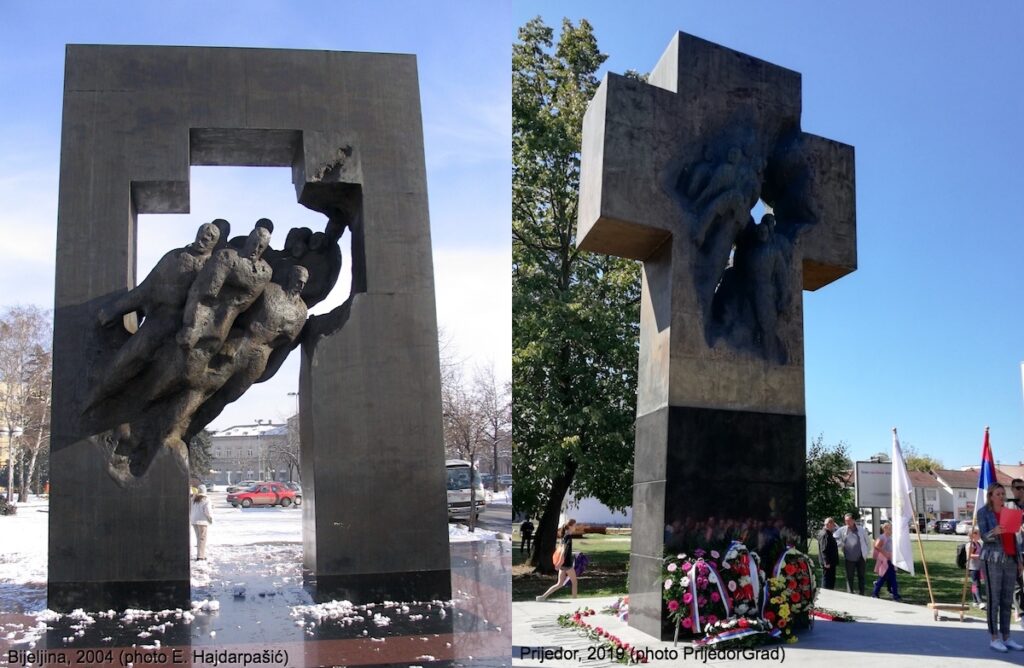
Before the 1990s wars, the monumental architecture of socialist Yugoslavia displayed a starkly different vision of public commemoration, one that was diverse, experimental, and antifascist in its political charge. This history was rooted in the Yugoslav experience of the Second World War, which saw a multiethnic Communist-led army—including Serbs, Croats, Muslims, Slovenes, Jews, and others fighting together—liberate the country from the Axis and collaborationist occupation. That struggle was complex, full of local variations, silences, and uncertainties, but the post-1945 official state narrative mostly emphasized its ultimate triumph and celebrated the aspirational “brotherhood and unity” of all nationalities. The guiding principle of the Partisan movement — Smrt fašizmu, sloboda narodu! or “Death to fascism, freedom to the people!” — became an oft-quoted slogan in socialist Yugoslavia. Hundreds of monuments were built to immortalize the antifascist struggle.
The Sutjeska monument, for example, was completed in 1971 to commemorate the Partisans who fought and died in 1943 in a brutal series of battles ultimately resulting in an astonishing Yugoslav victory against the far more numerous Nazi-led forces besieging them. Of the nearly 8,000 Yugoslavs killed there, the bodies of 3,301 Partisans were eventually interred at the Sutjeska memorial complex. Even today, the Sutjeska monument remains an instantly recognizable icon of Yugoslav antifascist resistance. I only saw the massive sculpture once, from afar, but it leaves no visitor indifferent. The fractal lines of poured concrete plunge against each other, the clashing boulders appearing to hover between mountains.
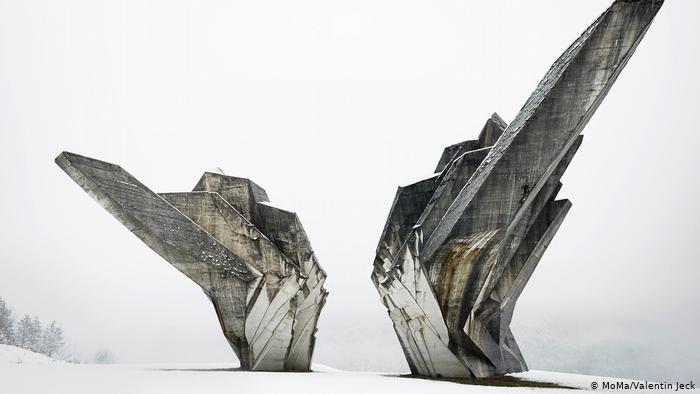
A few years ago I came across a brochure of the creator of the Sutjeska monument, a sculptor by the name Miodrag Živković. As my eyes ran down the list of his works from the late 1960s to the present, I had to stop and reread multiple times the entries of Živković’s works after Yugoslavia:
1998— “To the Fallen Fighters, Bijeljina,” read one.
2000— “For the Honorable Cross, Prijedor.”
2002— “To Fighters for Freedom, Modriča.”
Seeing these entries laid out so casually on the page—Sutjeska 1971; Bijeljina 1998—left me with that sickly, slightly feverish feeling, like a cement mixer churning dread, disgust, and sand in my stomach. The Sutjeska and Bijeljina monuments appear to stand for two profoundly divergent worlds, one symbolizing the cosmopolitan and antifascist past of socialist Yugoslavia, the other embodying the hyper-nationalist and segregationist present of post-Yugoslav states. Yet both monuments were made by the same sculptor. As I walked away, my stomach still churning, my first thought was not “How could this be?”, but “Oh no, not again.”
Miodrag Živković is one of many Yugoslavs—filmmakers, musicians, philosopher, historians—who had crafted cosmopolitan international profiles and went on to celebrate convicted war criminals or provide artistic covers to an impressive array of ongoing frauds. The appeal of fascism in power—a key element in why so many public figures embraced Milošević in the 1990s or Trump in the late 2010s—opened the door for all sorts of unsettling transformations and narrative appropriations. Talk to a number of Yugoslavs—and increasingly Americans after 2016—and you’ll soon enough hear stories about similar moments when they learned that one of their favorite celebrities or intellectual heroes became apologists for an array of fascist-friendly causes.
I too remember when my teenage idols became fascist sidekicks. In the late 1980s, just before the dismantling of Yugoslavia, I was a huge fan of the absurdist sketch show “The Top List of Surrealists,” often described as a Yugoslav Monty Python, though with more explicit political stings woven into the ludicrous skits (Sarajevan families territorially dividing their apartments the way politicians talked of new maps, citizens drowning in pollution but talking about abstruse constitutional reforms as their biggest problem, and so on). Nele Karajlić, then a Sarajevan punk-band singer and actor on the show, was one of the most popular Top Surrealists. I knew pretty much every skit by my teenage heart. Just after the war broke out in 1992, I remember hearing that Karajlić had left Sarajevo for Belgrade, where he began to justify the siege and shelling of his former hometown. The feeling of betrayal and anger was deep, exacerbated by the fact that we had no electricity and no TV to even see this transformation with our own eyes. Together with Emir Kusturica, a sharp-eyed socialist-era filmmaker who became an apologist for Serbian nationalism, Karajlić began singing songs celebrating the convicted war criminals Radovan Karadžić and Ratko Mladić. That’s just my little memory; other Yugoslavs could easily continue the list, with musicians like Oliver Mandić, writers like Isidora Bjelica, theater leaders like Ljubiša Ristić, all of whom turned to exalting some mass murderer in the 1990s.
Intellectual transformations from cosmopolitanism to fascism followed similar patterns. Mihailo Marković, for example, was an internationally renowned Marxist humanist thinker in the 1970s admired by German and American intellectuals for his writings on individual dignity and self-actualization; the New York Times described him and the Praxis group of philosophers as “mainly left-wing, idealistic Marxists” who defied the often rigid Communist Party teachings. By the late 1980s, Marković became a vehement advocate for surging Serb nationalism, hitching his philosophical work to the rising star of Slobodan Milošević. That alliance continued even after the wars; in 2004, when Milošević was finally put on trial for crimes against humanity, Marković testified on Milošević’s behalf. By her own telling, the American political philosopher Seyla Benhabib began her intellectual journey in Dubrovnik in 1978, where she met Mihailo Marković, Jürgen Habermas and other leftist European thinkers of the time. Benhabib became so involved in this vibrant intellectual scene that a decade later, she became an editor of the Praxis journal in 1989. By then, her colleague Marković was writing screed after screed about the menacing birth rates of Albanians, the specter of a Muslim state in the heart of Europe, and other hallmark themes of ascendant Serbian nationalism. As an editor of Praxis, Benhabib was pressured by her Yugoslav associates to publish a few such pieces, “which, now in retrospect, I consider racist-nationalist propaganda.” Years afterwards, Benhabib was still trying to understand what had happened to her Yugoslav colleagues. “Sometimes I felt like webs were being spun around me,” she said.
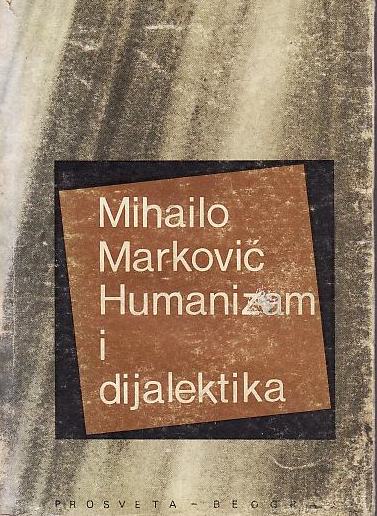
The career of Miodrag Živković fits somewhere along this spectrum, but his chosen medium—monumental sculpture—imbued his work with an added historical dimension. Yugoslav and European histories offer countless examples of sculptors and architects mobilized into the service of various and sometimes opposing ideologies, from fascist to Communist to nationalist ones. Famous sculptors like the Croatian artist Ivan Meštrović, for example, have put their art at the service of various causes since the 1920s. One of Meštrović’s students, the artist Antun Augustinčić, even has the rare distinction of having sculpted busts of both the fascist Ustashe leader Ante Pavelić and then, after defecting to the Partisans, of the Communist commander Josip Broz Tito.

But something else bothered me about those lines on Miodrag Živković’s CV—Sutjeska 1971; Bijeljina 1998—leaving a sting that felt different from, say, Benhabib’s regret over Marković or my past outrage at Karajlić’s conduct. After thinking about this for some time, I realized that my lasting unease kept returning to questions about the alleged antifascist charge of Živković’s work and generally about relation between antifascism, monuments, and political movements before and after Yugoslavia.
What was specifically antifascist about Živković’s work before the war? Was the embrace of nationalism by people like Marković or Živković a matter of expediency, or greed, or some sudden desire for power and unfettered bigotry? Or was the rot there all along in socialist Yugoslavia? What meaning does antifascism today have when we confront intellectuals and artists who have deliberately intertwined the legacies of antifascism into nationalist narratives?
It took me a while to come to these questions, partly because I had an often unstated emotional relation to Yugoslav antifascism and its monuments that I had never questioned before. If we’re being honest, a good part of Yugoslav antifascism since 1945 was not the result of some profound ideological revelation, but a matter of schooling, family histories, and childhoods infused with commemorations of the Partisan struggle. As a kid who grew up in 1980s Sarajevo, I often played “Partisans and Germans,” a game modeled on countless Yugoslav films featuring obligatory shoot-outs in which, ultimately, the Nazis die (which is why kids had to force each other to reluctantly take turns in that role). In elementary schools, we went on tours of heroic Partisan sites. At home I heard various stories that both affirmed the Yugoslav struggles and spoke of other events, often bits of refugee stories in Sandžak and Herzegovina, that were not mentioned in school. I knew “the Seven Offensives” by heart (though I had to google them to refresh my memory as I was writing this).
When we visited my elderly aunt in Prozor, a small Bosnian town nestled between mountains, we would always spend a day at the Makljen monument, which commemorated the Partisan rescue of some 4,000 wounded fighters from the oncoming Axis offensive in 1943. The artist Boško Kućanski designed the monument, which began construction right around the time I was born in 1977. My mother kept a picture of maybe 4-year-old me, wearing a Partisan helmet and red shirt, in front of the monumental sculpture. As a kid I loved its awe-inspiring scale: a mighty concrete fist standing defiant between mountains. It was a fascinating place.
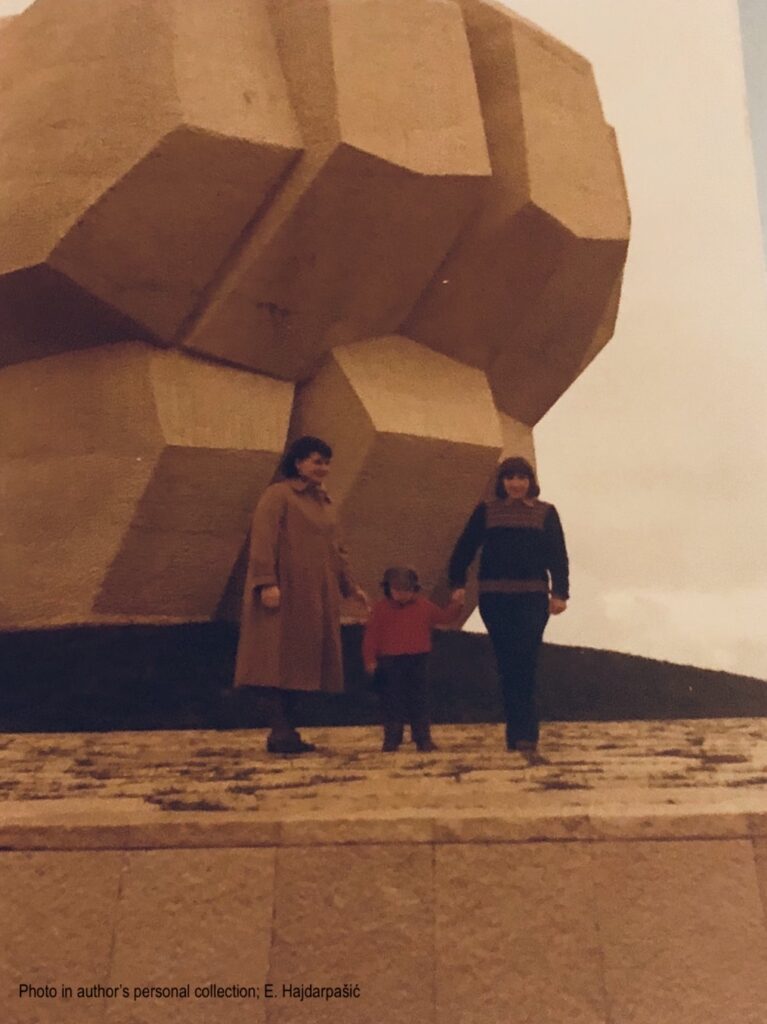
The Makljen monument no longer exists. In 2000, a group of local extremists dynamited the place. While the perpetrators—almost certainly retired paramilitaries with leftover explosives at home—were never caught, their intent was clear: erasing reminders of the pre-war Yugoslav society in order to enforce post-war ethnic segregation. Only a sad ramshackle pile of iron and concrete remains. Hundreds of other Yugoslav-era monuments to the antifascist struggle met similar ends in abandonment or destruction, with Croatian extremists being especially eager to lead the charge against these sites across Bosnia and Croatia.
I think that’s partly why I once loved the Sutjeska memorial. Though I memorized the battle names as a kid, it was only later, after my family had left the 1990s war in Bosnia and come to America, did I re-learn the Partisan struggle, understanding it in new and often challenging ways. I loved the fact that it survived the 1990s wars, unlike Makljen and other deliberately destroyed memorials. I loved the way it looked. And I know many other Yugoslavs who found in Sutjeska the symbolism and the aesthetic they wanted to reassert against the post-1990s surge of fascists of various stripes.
That’s why it’s all the more important to take a sober look at Sutjeska today. Ever since the 1990s, Serbian nationalists have appropriated certain symbolic pieces of the antifascist struggle—like the Sutjeska site—into a longer story of specifically Serbian suffering and liberation, stretching from the nineteenth century through the two world wars and into the Yugoslav wars of the 1990s. In that decade, as the new story goes, Serb nationalist paramilitaries “liberated” large parts of Bosnia from threatening non-Serb inhabitants. This is a complex set of narrative appropriations, one that the historians like Olivera Milosavljević repeatedly warned about yet one which remains little discussed outside the relatively small circles of Yugoslavs who have observed such usurpations with feelings of dismay and powerlessness since the 1990s.
And since the 1990s, Živković’s work provided new artistic expression for the Serb nationalist appropriation of antifascist legacy. Once the sculptor of Partisan battles, Živković turned to new heroes after Yugoslavia, creating in 1992 a statue to Petar Bojković, a Serbian royalist general killed by the Partisans in 1945. New awards, like those celebrating the Serbian “wars of liberation, 1912-1995,” were bestowed on Živković’s designs. His cross-shaped works now adorn post-genocidal sites across Bosnia—Brčko, Bijeljina, Prijedor, Derventa, Modriča, Mrkonjić Grad—with a special focus on casting the Bosnian War as a story of Serb suffering and “liberation.” In recent years, Miograd Živković has endorsed the general arc of this narrative, drawing an intertwined thread of Serb victimhood and state-making from Sutjeska to Bijeljina. “My monuments speak of our suffering, of our fight, and of everything that our people experienced. I dedicated my sculptures to various historical events, and one of the first ones was the [Nazi] execution of [Serb] students in Kragujevac [in 1941],” said Živković at the opening of an exhibit of his works in Banja Luka in 2020.
The Sutjeska memorial complex itself is slated to be redesigned to fit this interpretation. A Serb Orthodox church will soon be built next to the Sutjeska monument to bless the Communist relics. This “renovation” is consistent with the ongoing nationalist appropriations of antifascism that seize parts of the Partisan struggle and resignify them as examples of implicitly ethnic sacrifice and heroism.
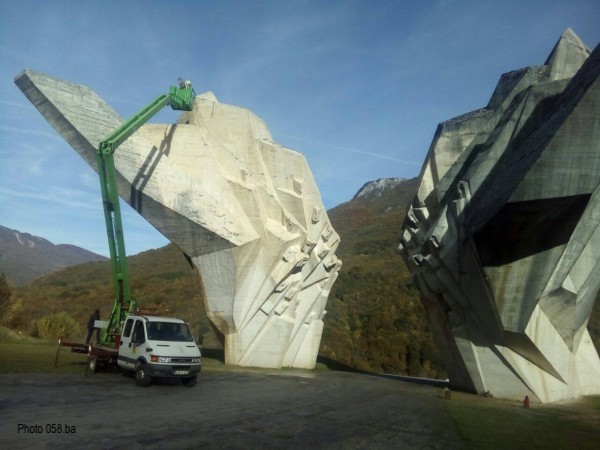
The obvious—and obviously right—response to these assaults and appropriations is to defend and reaffirm what the Partisan struggle stood for. We want to—and we should—draw strength from that past, remaining vigilant of the temptation to idealize or ignore its flaws, erasures, and injustices.
But our larger past also inexorably, mercilessly compels us to recognize the fact that no victory is ever complete. If something like antifascism is to exist after the Yugoslav wars, it has to be about more than looking to the achievements of the past as our sole source of inspiration. Antifascism is not a monument. It’s not a still point in a changing world. If it is to have meaning today, antifascism has to be able to speak to diverse experiences, forcing us both to look to the past and to realign ourselves in the present and to the future, seeking new strategies, symbols, and allies.
For us refugees and diasporas scattered by the fascism of the Yugoslav 1990s, that means looking to both our old and new homes as we ask questions about what antifascism could mean today. As I write this in Chicago in the summer of 2020, as Black Lives Matter protests seek to confront and dismantle the foundational anti-Black structures of the United States, I’ve been thinking about the Black struggles for freedom and dignity that predate fascism. Instead of us Yugosplaining the world after Trump, it seems to that we should be taking better notes on these histories. Wasn’t it, among others, Toni Morrison who already pinpointed with breathtaking clarity some of the deeper connections between racism and fascism? In 2009, she wrote of the Yugoslav 1990s—“the fall of communism created a bouquet of new or reinvented nations who measured their statehood by ‘cleansing’ communities”—as a globally significant preamble to “more and more illogical waves of war, designed for the grasp of control by the leaders of such states. Laws cannot stop them, nor can any god.”
The Yugoslav and American experiences around these connections are not the same. They don’t arise from the same histories and they don’t follow the same strategies. I know there is no single universal antifascism that fits every place in exactly the same way. But I still can’t help thinking that if antifascism is to be alive in the twenty-first century, it would look more like what antiracism does: a daily practice, a habit born of necessity, an ongoing struggle that seeks new connections across our world.
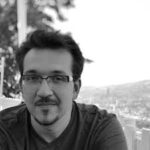
Edin Hajdarpašić is Assistant Professor of History at Loyola University Chicago, where he teaches courses in Western Civilization; the modern Balkans; nineteenth-century Europe; and the Habsburg and Ottoman Empires. Edin has published extensively on Balkan history, conflict and memory, religious and ethnic relations, nationalism, and the Ottoman legacy in Southeastern Europe. His interests also include film, museums, and other visual representations of the past; ethnography; and political theory. More about him in AHA Today.

